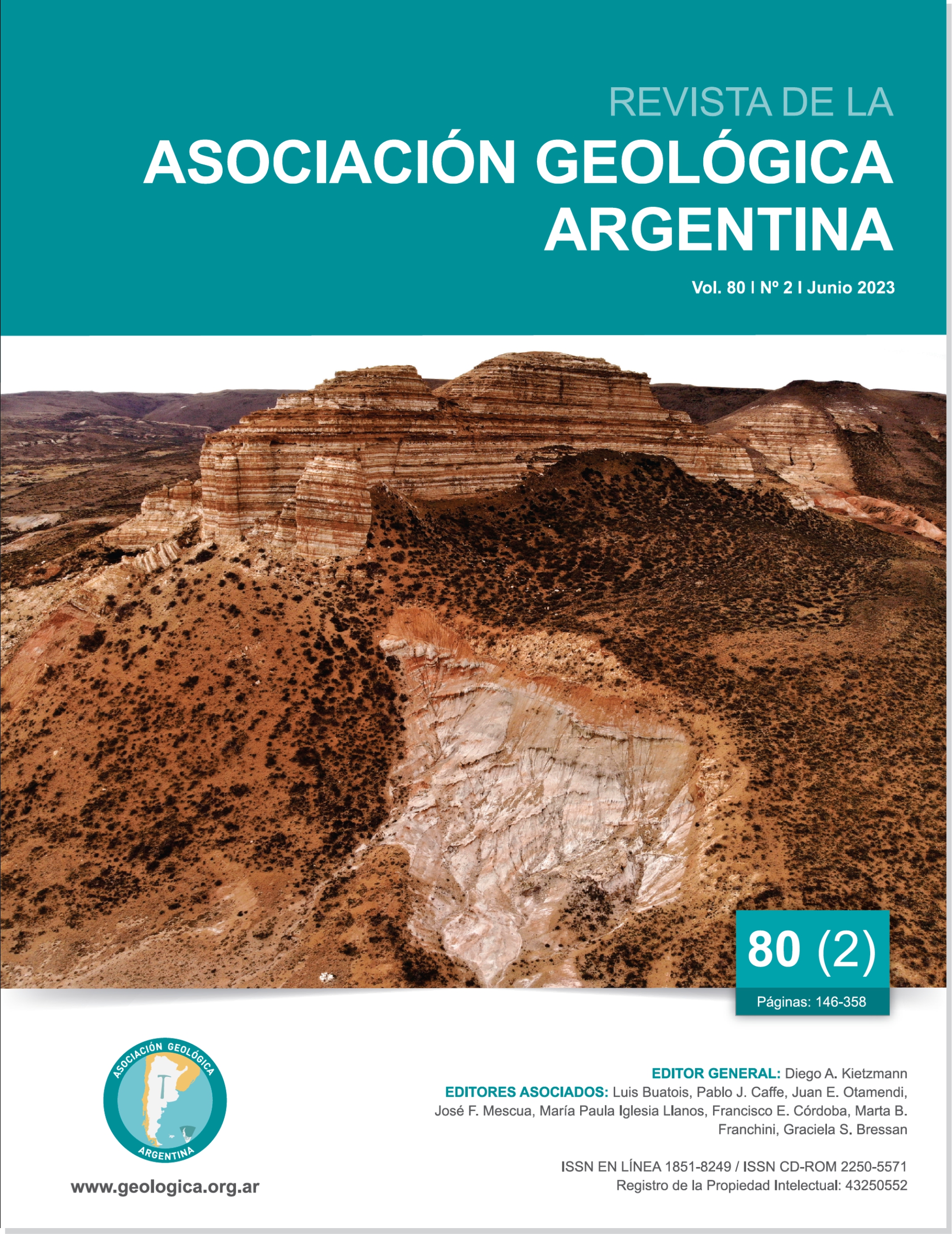Evidence of successive failures of a natural dam in Laguna Blanca, Central Andes (31º S)
Main Article Content
Abstract
The characterization of natural dams, caused by landslides, is the first step for defining their potential risk of a sudden discharge, which might cause catastrophic effects downstream. In this paper, we study successive collapses of the Blanca Lake, dammed by a rock avalanche in a narrow valley of the Blanco River basin, in San Juan province. Using remote sensing techniques and detailed sedimentological studies, two paleo-lake levels were recognized, which partially breached in at least two outburst events. The oldest level was recognized 80 m above the existing lake, taking up to 2.14*106
m2 and collapsing catastrophically. The second level was at least 5 m higher than the present lake, also drained by a sudden collapse. Stability indexes were
calculated based on the estimated parameters for each stage of the lake, which were contrasting. This could a consequence of the variability of the influencing parameters that affect the stability and the lack of representation of Andean lakes. As result, the stability of the Blanca Lake is considered as under steady-state conditions that could be modified by external influences that affect this state, such as seismic shaking, internal and superficial erosion of the rock avalanche deposit by sediment-free water and slope collapses within the lake.
Article Details

This work is licensed under a Creative Commons Attribution-NonCommercial 4.0 International License.
Nota de copyright
Los autores conservan los derechos de autor y garantizan a la revista el derecho de ser la primera publicación del trabajo licenciado según una licencia de atribución Creative Commons que permite a otros compartir el trabajo con el reconocimiento de la autoría y de la publicación en la que se publicó por primera vez.
Declaración de privacidad
Los nombres y direcciones de correo electrónico introducidos en esta revista se usarán exclusivamente para los fines declarados por esta revista y no estarán disponibles para ningún otro propósito u otra persona.

